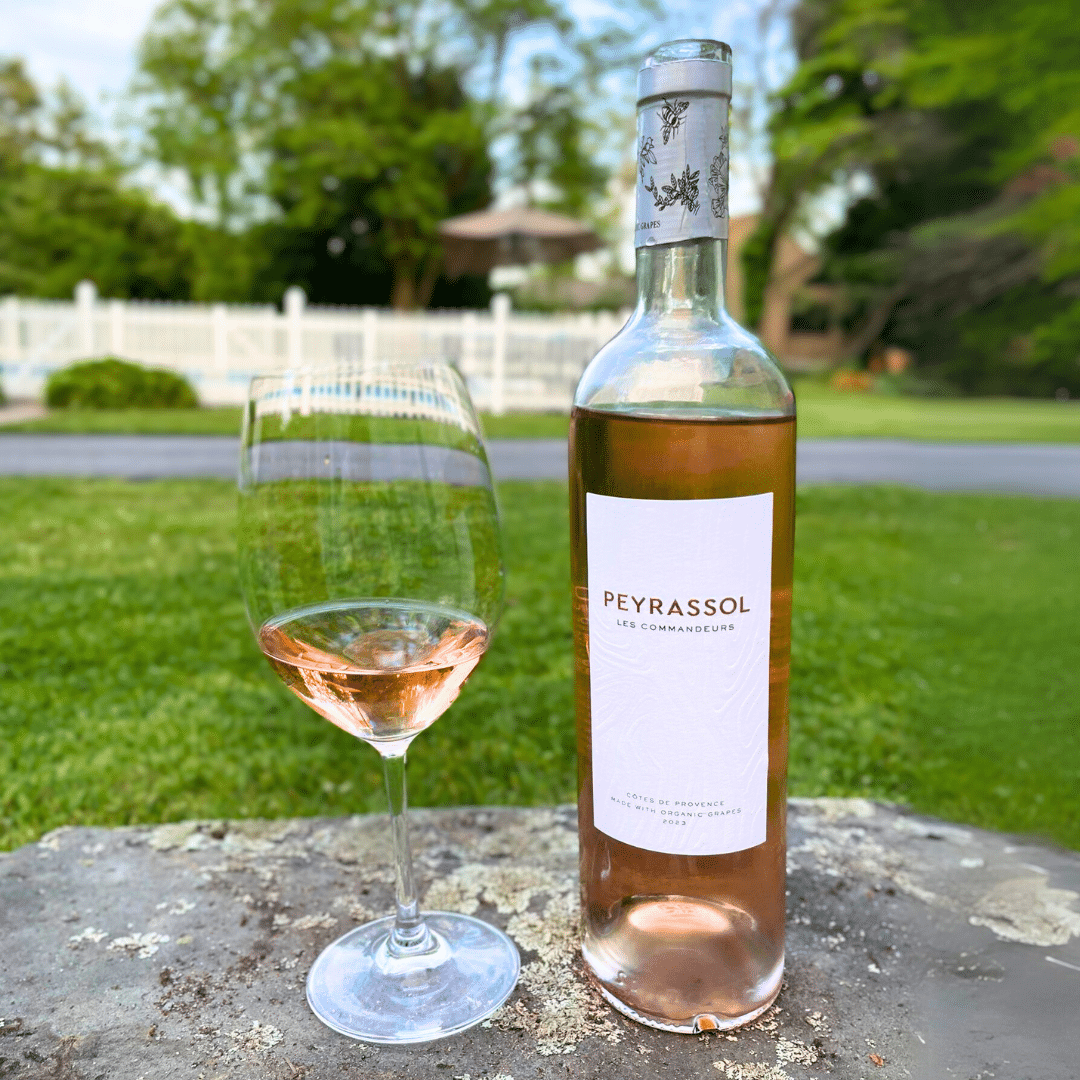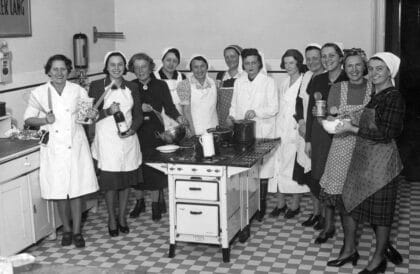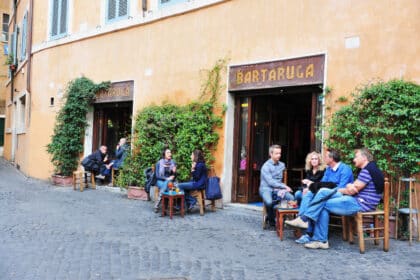Everything is Coming up Rosés!
It’s that time of year again.
If you are a wine lover with toes in the sand, wind in your sails, or feet dangling off the dock, chances are you have a bottle of rosé with you. This varietal delights a broad range of wine lovers in the same happy space, and red and white drinkers finally agree on the same summer pour.
For those of you still lingering in the good old days, leave behind your notions of Mom’s sweet white zinfandel. Modern rosés are fruity but dry, embodying freshness with hints of tannins. Rosés are typically made from red wine grapes but are closer to a white wine in texture and finish.
The rosé winemaking process is accomplished through three methods.
The first and most common is simple maceration: the grapes are pressed and left briefly to rest on the red wine skins. This process produces various shades of pink and some soft tannin depending on the varietal and the wine maker’s choice of timing. The second is the saignee method. Saignee literally translates to bleeding in French, and, as its name suggests, it refers to bleeding off a portion of a red wine in the early stages of the fermentation process. This method is most used in sparkling rosé and can create wines of varying hues and tannin depending on the timing of the bleeding. Finally, the least and the least common is blending finished red and white wines together, producing some lighter-colored rosés.
Visiting the rosés section at your local store will present a dizzying array of options to choose from.
The ever-popular, super trendy rosés originating from Provence – the coastal region of Southern France – are still the showstoppers at the party. Light in color, delicate on the palate, and with spectacular freshness, the best will offer a pretty minerality to round out summer seafood dishes. Made from the red wine grape varieties Grenache and Cinsault, the blend creates a delicate rosé. Often, there could be Mourvèdre mixed in for a bit of spice, or local white grapes included for more acidity.
 Thanksgiving table with a glass of rose wine
Thanksgiving table with a glass of rose wine

France
Popular Provence rosés include Miraval (Brad Pitt and Angelina’s ownership stakes have kept it in the news) and Whispering Angel, whose ever-growing popularity seems to have no end. If you are bringing wine to a party, by all means, pay for the hottest crowd-pleasers, but if you are sitting quietly by the water with just your bestie, you can find the same quality for a reduced price. Try Chateau Montaud, Le Charmel, or Fleur de Mer for excellent options. For about the same price as trendy options, you can find some incredible Provence quality, such as Minuty or Peyrassol, which is often credited with making the first Provence rosé and still produces one of the best.
Moving slightly Southwest of Provence, you will come to the expanding vineyards of Languedoc. This beautiful region, nestled between rolling hills and the sea, is one of the largest wine-production regions in Europe. Rural and rustic, the Languedoc rosés tend to be slightly less refined but irresistibly drinkable. Adding a bit of Syrah creates a color that is often a bit darker with more tannin and a fuller finish. Often, you will find either the Languedoc designation on the bottle or Pay D’Oc. Both come from this region. There is a wide selection of Languedoc wines in fine wine stores and your local grocers. Gerard Betrand’s Cote de Rosés is a great example with its pretty bottle and inviting price. I like Rosé All Day for its casual and fun label and easy drinking.
For wine geeks out there, I suggest you revisit the Tavel region. This tiny hamlet in the Cote du Rhone across the river from Chateauneuf-du-Pape is known for its darker pink, higher-tannin, higher-alcohol rosé. The soil in this region is made up of flat white stones, pebbles, sand, and gravel, imparting some of that crave-able minerality and acidity to balance out all the weight of the super-ripe grapes in this region. Put this wine on your patio table and a charcuterie board with a fatty duck pate or foie gras.
California and New Zealand
Of course, rosé is not made only in France. California has stepped up with some particularly pretty rosés, my favorite being made from Pinot Noir. For under $20, I recommend Raeburn’s Pinot Heavy Rosé. If you can find it and have the resources for a higher price tag, don’t pass on a chance to enjoy Flower’s 100% Pinot Noir. Pinot Noir is also the star of New Zealand rosés. Expect them to be much more acidic than those in California, but the good ones deliver with big cherry fruit. Try a New Zealand rosé with a fatty smoked pork or chicken dish to deliver a refreshing balance on a warm summer day. If you have a favorite Sauvignon Blanc producer from New Zealand, don’t hesitate to try their rosé; chances are you will love it.
Spain and Italy
The Spanish and the Italians have been producing deep tannic rosé for centuries. Darker in color, these wines are made from all your favorite red wine grapes, including Nero D’Avola, Sangiovese, Montepulciano, Tempranillo, and Garnacha. Although decidedly heavier with more detectable tannin than French rosé, Rosados nonetheless make a great pairing with shrimp scampi, frittatas, and savory porchettas. These are hearty food wines with more herbs and wildflowers on the nose.
Austria
Lastly, if you can find a rosé from Austria, don’t pass up the opportunity to pick it up. Made from the native Austrian grape Zweigelt, it presents hints of cherry and raspberry with a black pepper finish. Zweigelt rosés are soft pink in color and are perfectly suitable as a typical aperitif—but for those of you more adventurous, try it with Asian pork and lamb dishes. The spice and tannins will hold up and give your dishes a pretty freshness to boot.
Final gossip on rosé? Here is a secret: don’t put them away after summer. I never set a Thanksgiving table without a rosé on it. It pairs perfectly with turkey and cranberry. At Christmas brunch, the rosé Champagne comes out, and while sitting by a fire on a Friday night in February, a Tavel with a meat platter works just fine. ![]()







